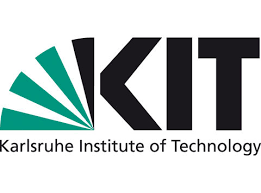Karlsruhe Institute of Technology: Simultaneous concept accelerates electrode production
Researchers at the Karlsruhe Institute of Technology (KIT) have developed and successfully applied an innovative concept for the simultaneous coating and drying of two-layer electrodes. This makes it possible to shorten drying times to less than 20 seconds, which means a reduction by half to a third compared to the current state of the art – without any loss of capacity in the battery. The concept enables lithium-ion batteries to be produced faster and more cost-effectively. The researchers report in the journal Energy Technology . (DOI: 10.1002 / duck.202100367)
Electric vehicles are of central importance for the mobility of the future. The demand for high-performance and inexpensive batteries is constantly increasing. In batteries based on lithium ions, the electrode layers are crucial because these active materials store the energy. The coating and the subsequent drying of the electrodes, however, cause a large part of the battery production costs. There is a high potential for savings in process engineering. Researchers of the Thin Film Technology (TFT – technology of thin layers) group of KIT under the direction of Professor Wilhelm Schabel and Dr. Philip Scharfer have been researching this area for years. The scientists have already succeeded in significantly increasing the coating speed. In addition, the TFT started an innovative drying management . The group has now achieved new results: The coupling of the coating and drying process steps resulted in a simultaneous concept. TFT presents the results in the magazine Energy Technology. Jana Kumberg, PhD student at KIT, was in charge of the publication. The TFT group develops its electrode manufacturing technologies in CELEST – Center for Electrochemical Energy Storage Ulm & Karlsruhe, one of the largest battery research platforms in the world.
Enables more cost-effective production
“Our work shows that, in principle, we have mastered all process steps in order to be able to produce batteries faster and thus more cost-effectively in the future, without compromising quality,” explains Schabel. With the usual electrode drying time of up to one minute, long dryer sections are required at production speeds of 100 meters per minute (m / min) and more. In the case of electrodes with a high application weight, this is technically hardly feasible and is becoming increasingly expensive. According to the new concept, different active materials are used for the individual layers and applied simultaneously. One layer is responsible for the adhesion, one for the specific capacity. This layer structure allows production with an extremely high drying rate and drying times reduced to a third.
Properties distributed specifically in the electrode layers
Despite the reduced drying time, there is no loss of capacity and thus the range of the battery, not even with so-called 3C cycles, i.e. fast charging times of 20 minutes. In their study, the scientists applied various active materials in the layers of an anode, distributed across the thickness, so that the different properties were distributed specifically in the electrode layers. As a result, the electrodes can be tailored and have improved mechanical and electrochemical properties. “We have achieved the first promising results,” says Schabel. “Now it is time to continue researching industrial implementation.” The group is currently working on various options for transferring the simultaneous concept to an industrial scale.
The Federal Ministry of Education and Research (BMBF) is funding the investigations as part of various research cluster projects with over five million euros. “Our research shows that in the future it may be possible in principle to increase the speed of battery production by 200 to 300 percent,” explains Schabel. The results are currently also being transferred to other materials and are also being used to optimize electrodes for sodium-ion batteries as part of research in the POLiS – Post Lithium Storage Cluster of Excellence.

